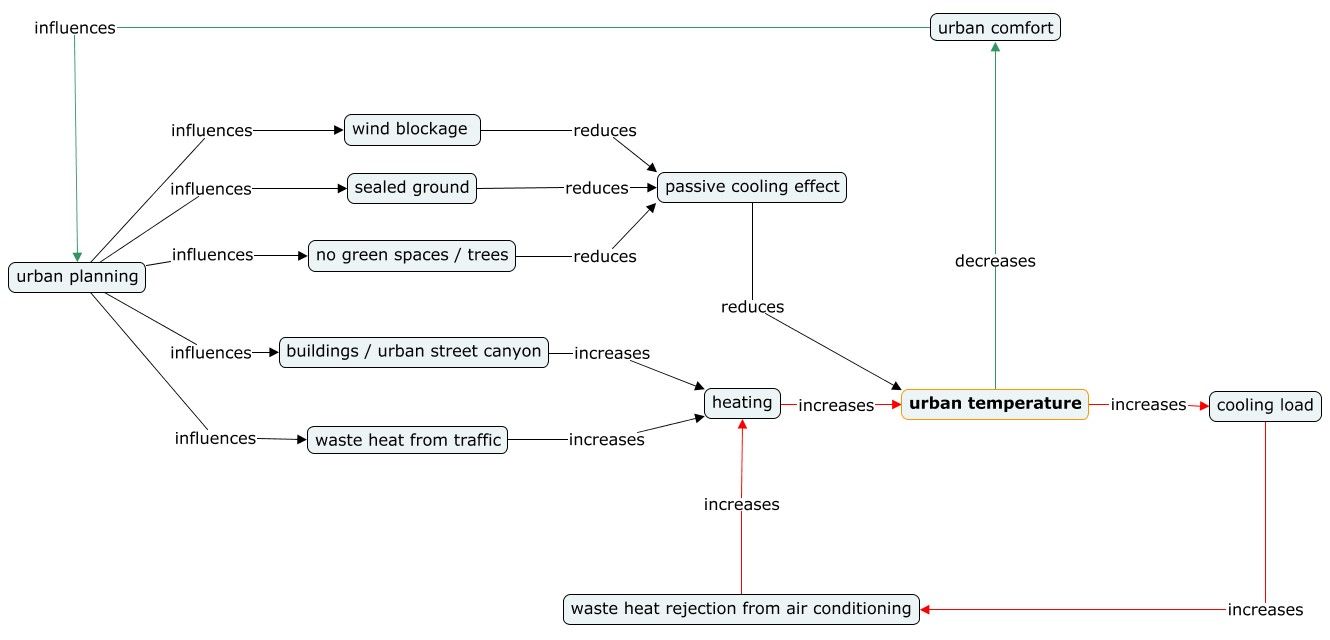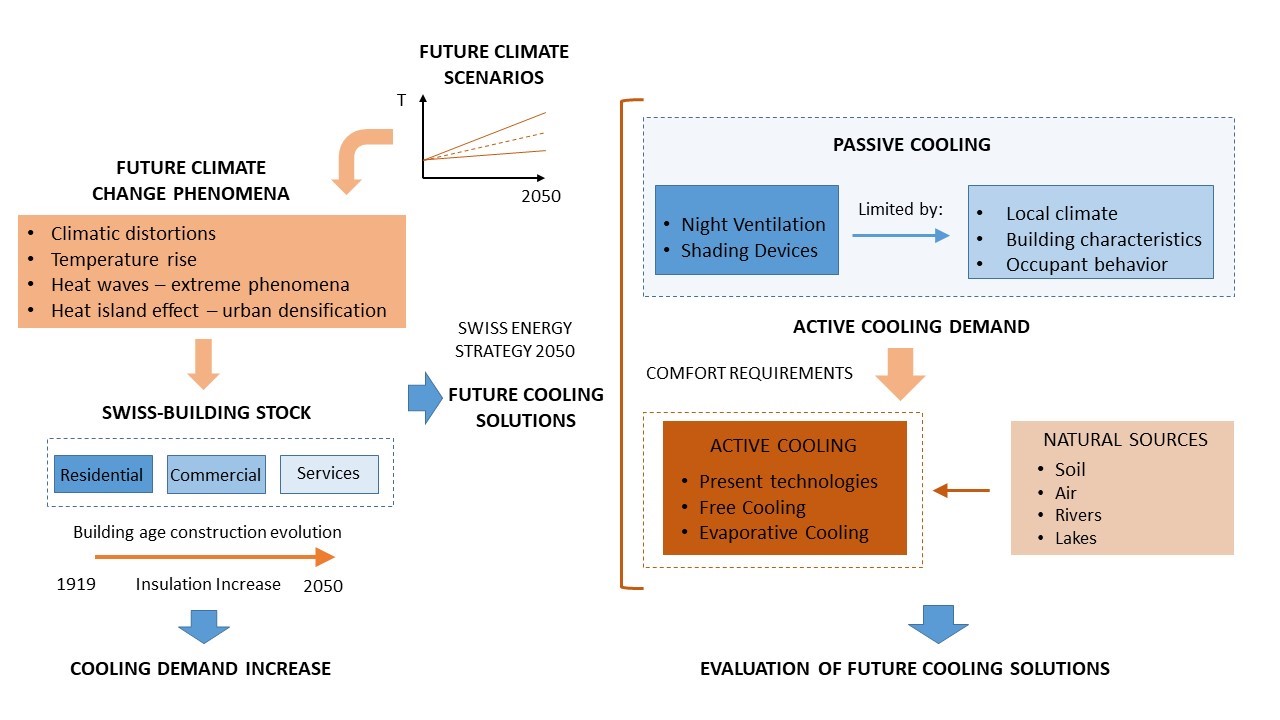Future cooling solutions in buildings
Under the effect of global warming and the increased comfort expectations cooling demand will significantly increase in future also in Switzerland. Cooling solutions for buildings are hence to be developed along with heating solutions in an integral way. While cooling demand is typically better in sync with available solar energy, management of excess heat from cooling is an issue and needs to be taken into account. This is especially true in urban environments which tend to heat up quickly during hot periods due to lack of vegetation. Large thermal mass of streets and buildings present in cities further delay the cool down during night such that passive cooling strategies as e.g. night ventilation become less effective. This effect known as urban "heat island effect" is having a great impact on comfort in streets and buildings and directly affect the cooling and consequent energy demand (see Figure 1).

In the frame of the Swiss Competence Center of Energy Research "Future Energy Efficient Buildings and Districts" - SCCER FEEB&D we are studying future cooling demand in Switzerland under different climate scenarios along with the effectiveness of passive and free cooling strategies and different active cooling technologies in buildings. Based on this analysis it is the goal to develop recommendations for cooling measures in buildings with a strong focus on retrofitting.
In this research a bottom-up physics-based modelling framework is used, whereby the Swiss building stock is represented by a large number of archetypical buildings determined by their age. In the analysis real building geometries are used as well as the influence of shading by neighboring buildings is considered. This modelling approach (Figure 2) allows for a detailed evaluation of the cooling demand for whole Switzerland while allowing for assessment of technical measures on the level of buildings.

-
Share
